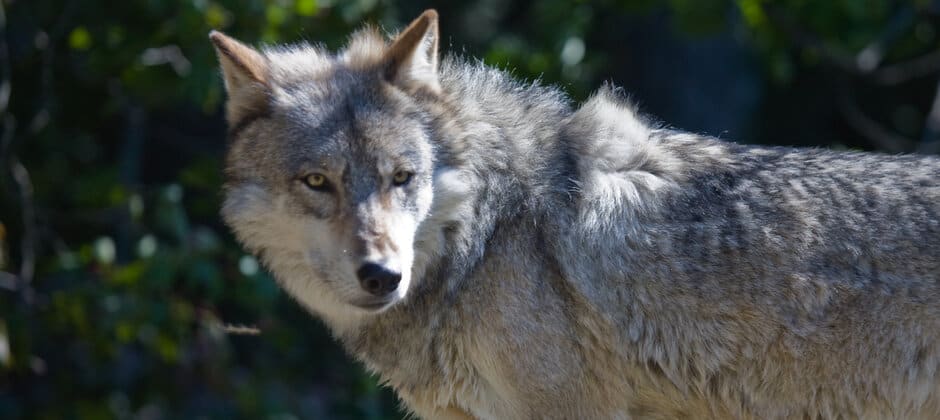Share this article
States increase wolf management actions
After gray wolves in the contiguous United States were removed from the list of threatened and endangered species under the Endangered Species Act earlier this year, the species is now being managed by state wildlife agencies, and is the subject of increased attention.
The Wildlife Society previously issued a statement that highlighted the role that wildlife professionals have had in restoring wolf populations over the past several decades. It also encourages state-led management that recognizes stakeholder values and advances conservation of the species.
In Colorado, voters in November approved an initiative to reintroduce wolves to the state by the end of 2023. The state agency recently released a timeline for their planning process, which calls for draft management plans to be released in mid-2022 and in mid-2023 with public comment periods. A final plan would be released in December 2023. While the agency has made progress toward reintroduction, some groups are concerned that actually releasing wolves by the end of late 2023 would be difficult under that timeline.
Other states where gray wolf populations already exist are exploring harvest opportunities.
Wisconsin recently completed its first wolf hunt since 2012. State law there requires the Department of Natural Resources to hold a wolf harvest season each year from the beginning of November through the end of February. The DNR intended to plan for a hunt in November 2021, using the time to ensure the harvest was based on science and to consult with tribes, but a court decision forced them to hold a hunt before the end of February. The state established a quota of 200 total animals, with 81 animals allocated to the tribes, who chose not to use their allotment. In the first 3 days of a week-long season, hunters and trappers took 216 wolves, ending the hunt for the year. The DNR estimated that before the hunt, Wisconsin had about 1,000 wolves in the state. The state’s target population is 350 individuals.
In Idaho, where wolves have been delisted since 2011, legislation was introduced last month to re-categorize the species as “predators” rather than “game animals” in certain parts of the state. The new categorization would require wolf hunters to have a hunting license, but allow them to hunt wolves year-round without harvest limits throughout much of the state. They would also be permitted to use a variety of pursuit and tracking methods including snowmobiles, all-terrain vehicles, helicopters and airplanes. According to the Idaho Department of Fish and Game, the state wolf population in 2020 was 1,556 wolves. The legislation calls for bringing that number down to 500. Idaho has held wolf hunts for several years, as wolves in the Rocky Mountains were first proposed for delisting in 2009 and then delisted in 2011 by congressional action.
Lawmakers in Montana, where wolves have also been delisted since 2011, are considering several bills to liberalize wolf hunting opportunities. One would allow hunters and trappers harvesting wolves to receive reimbursement for their expenses from private organizations, such as livestock groups, which some critics say is similar to the bounties of last century’s predator control approaches. Others would allow individuals to use bait, artificial lights and night-vision scopes, enable unlimited harvest of wolves, extend the wolf trapping season and permit the use of snares.
Read TWS’ Position Statements on The U.S. Endangered Species Act and Wolf Restoration and Management in the Contiguous United States
Header Image: With gray wolves off the ESA list throughout the lower 48, states are expanding their management through both hunts and reintroduction efforts. Credit: dallidee








